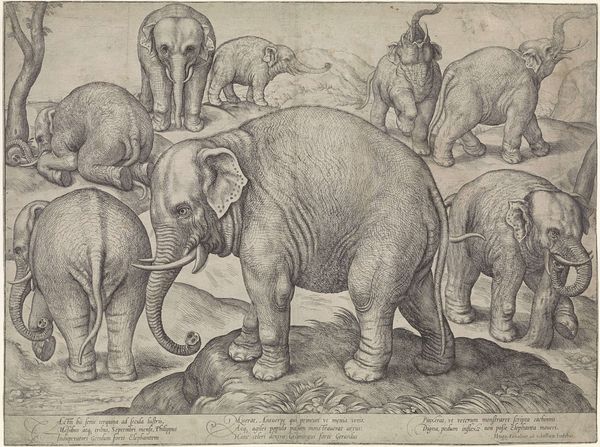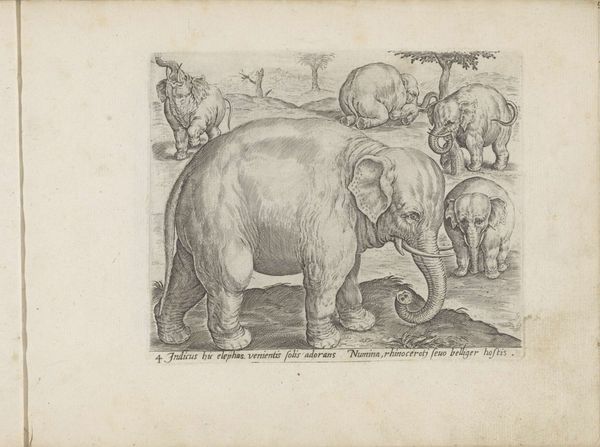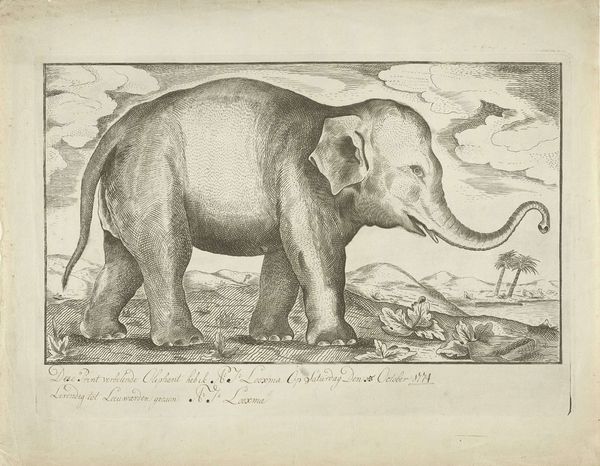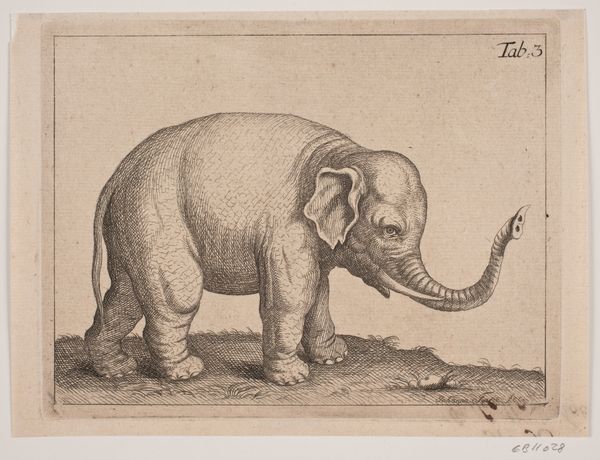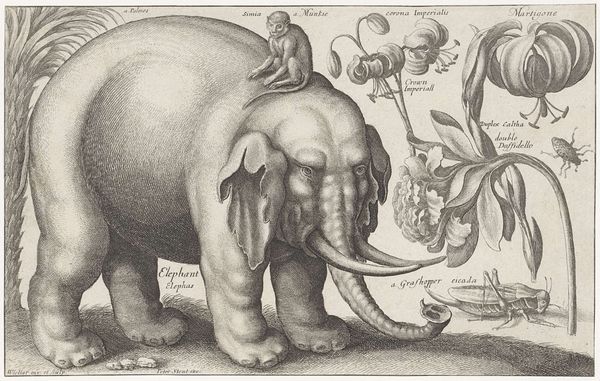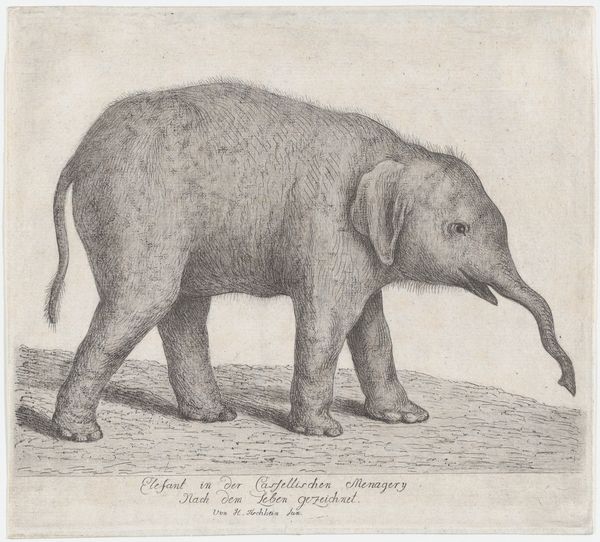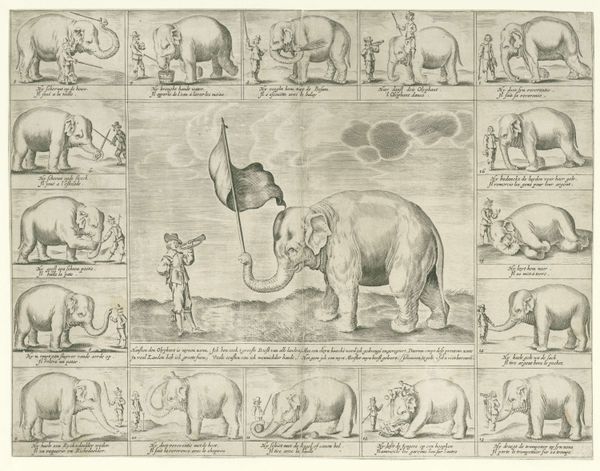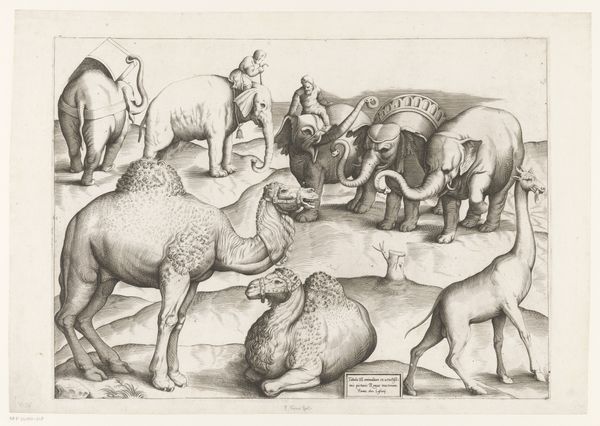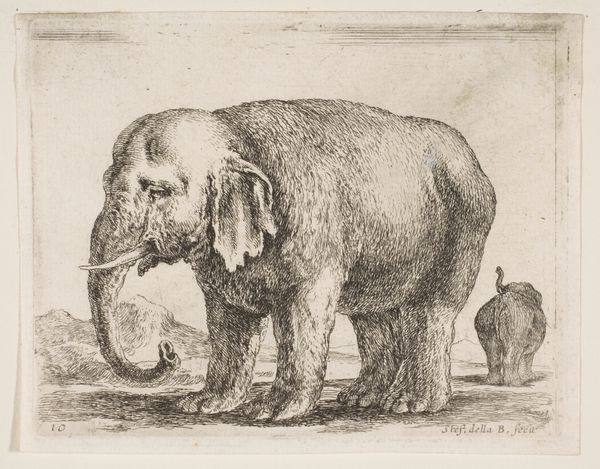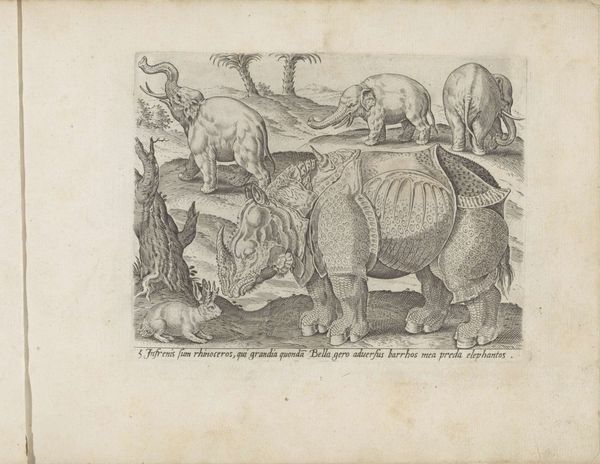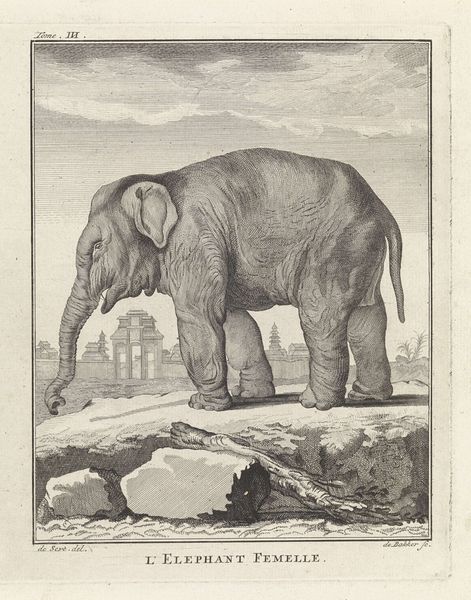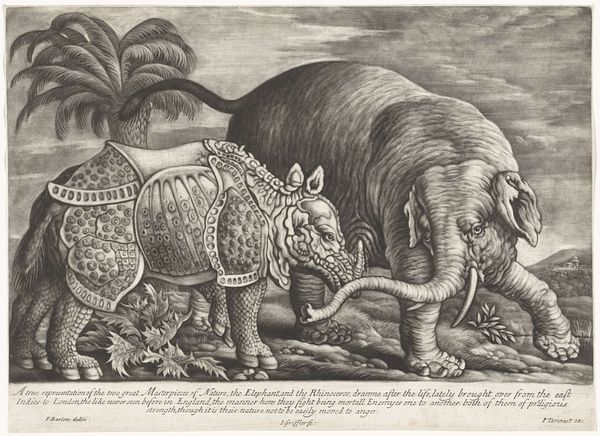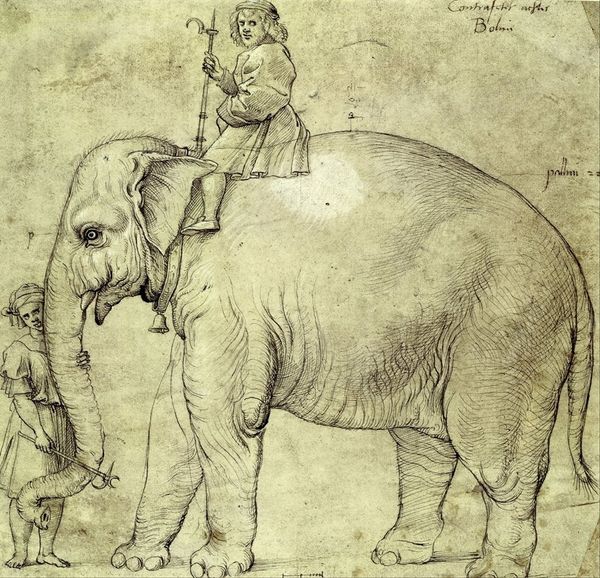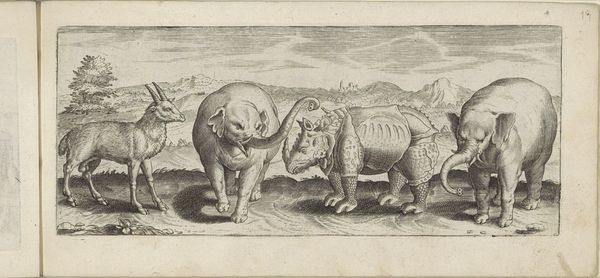
print, etching, engraving
#
animal
# print
#
etching
#
folk-art
#
history-painting
#
engraving
#
realism
Dimensions: height 245 mm, width 283 mm
Copyright: Rijks Museum: Open Domain
This print of a trained elephant was made by Wenceslaus Hollar, likely in the 1600s, using etching. Hollar incised lines into a metal plate, which was then inked and printed on paper. This method allowed for detailed lines and shading, capturing the elephant's textured skin and form. The material quality of the printmaking is striking. It transforms the animal into a series of delicate marks on paper, each line contributing to the overall image. The controlled nature of etching, as a medium, contrasts with the wildness of an elephant, emphasizing the act of taming. The work's social context emerges through its depiction of a trained animal. The elephant's poses, prompted by its master, are a testament to control and labor. The elephant, an exotic creature, becomes a symbol of both subjugation and entertainment, reflecting broader themes of power and spectacle within 17th-century society. Ultimately, this print serves as a reminder that even the most seemingly straightforward images are products of complex social, economic, and material relations.
Comments
No comments
Be the first to comment and join the conversation on the ultimate creative platform.
